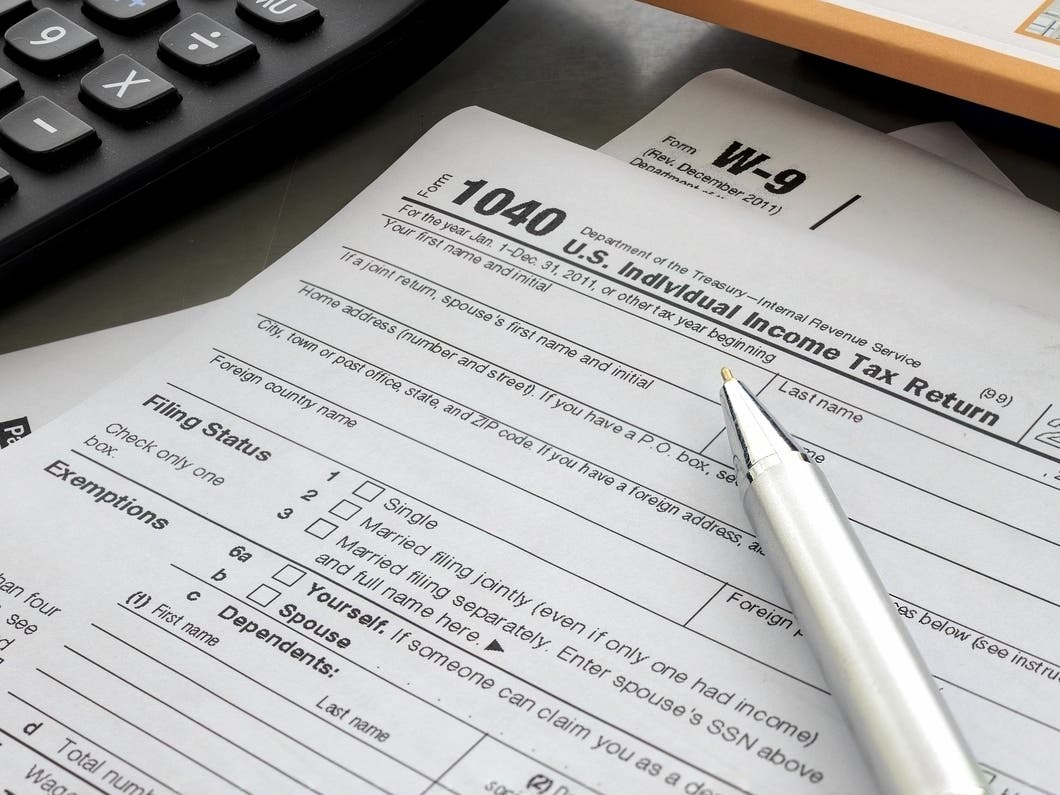Business & Tech
2023 Federal Income Tax Returns: Child Tax Credit, More Things To Know
This year, the credit is based on income, filing status, the number of children — and if Congress acts, it could go up for tax year 2023.

ACROSS AMERICA — A combination of inflation adjustments and the potential for last-minute changes in child tax credits could mean lower federal income tax bills for the 2023 tax yer.
The IRS began accepting federal returns for the 2023 tax year on Monday, Jan. 29. The deadline to file federal tax returns is Monday, April 15. In many places, 2023 state income taxes returns are due the same day.
Here’s what taxpayers need to know:
Find out what's happening in Across Americawith free, real-time updates from Patch.
The Child Tax Credit
The child tax credit allows eligible parents and caregivers to reduce their tax liability and possibly receive a refund or a larger refund. This year, the credit is based on income, filing status, the number of children, and whether the IRS classifies those children as dependent or qualifying.
Enhanced child tax credits are included in a bipartisan tax deal that lawmakers hoped to pass before the 2023 tax season began. The proposed legislation has wide support among Democrats and Republicans but is up against a time crunch.
Find out what's happening in Across Americawith free, real-time updates from Patch.
If passed in the coming weeks, the tax credit for caregivers would increase from $2,000 to $2,100 and could be applied retroactively to 2023 returns.
Taxpayers who claim the tax credit, or an earned income tax credit, won’t receive their refunds until mid-February, regardless of when they file.
The Standard Deduction
Before filing, taxpayers need to determine if they’ll itemize or take the standard deduction, which most choose. It’s a fixed dollar amount that reduces taxable income.
For the 2023 tax year, the standard deduction, adjusted for inflation, is $13,850 for single filers and married people filing separately, $27,700 for married couples filing jointly and surviving spouses; and $20,800 for those filing as head of household.
People 65 and older or who are blind can take advantage of an extra standard deduction. This year, the extra deductions are:
If the taxpayer is 65 or older:
- $1,500 per individual among married couples filing jointly or separately
- $1,850 for single filers or those filing as head of household
If the taxpayer is blind:
- $1,500 per individual in married couples filing jointly or separately
- $1,850 for single filers or those filing as head of household
If the taxpayer is blind and 65 or older:
- $3,000 if married and filing jointly or separately
- $3,700 for single filers or those filing as head of household
Tax Brackets
Here are the tax brackets for single filers and married couples filing jointly (the brackets for married couples filing jointly are in parenthesis, and the dollar amounts refer to taxable income=);
- 10 percent: Up to $11,000 ($22,000)
- 12 percent: $11,001 to $44,725 ($22,001 to $89,450)
- 22 percent: $44,726 to $95,375 ($89,451 to $190,750)
- 24 percent: $95,376 to $182,100 ($190,751 to $364,200)
- 32 percent: $182,101 to $231,250 ($364,201 to $462,500)
- 35 percent: $231,251 to $578,125 ($462,501 to $693,759)
- 37 percent: $578,125 or more ($693,750 or more)
Here are the tax brackets for married couples filing singly and heads of households (the brackets for heads of households are in parenthesis):
- 10 percent: up to $11,000 (up to $15,700)
- 12 percent: $11,011 to $44,725 ($15,701 to $59,850)
- 22 percent: $41,726 to $95,375 ($59,851 to $95,350)
- 24 percent: $95,376 to $182,100 ($95,3t1 to $182,100)
- 32 percent: $181,101 to $231,250 ($182,201 to $231,250)
- 35 percent: $231,251 to $346,875 ($231,251 to $578,100)
- 37 percent: over $346,875 (over $578,100)
How To File For Free
Taxpayers with an adjusted gross income of $79,000 or less can use the IRS Free File option, which pairs qualifying filers with trusted agency tax preparation partners. The qualifying income threshold is $6,000 higher than last year.
Direct File is a pilot in-house tax preparation and filing system free to taxpayers in a dozen states — Arizona, California, Florida, Massachusetts, Nevada, New Hampshire, New York, South Dakota, Tennessee, Texas, Washington and Wyoming.
The pilot program is mainly limited to several hundred state government employees with simple tax returns.
How To Get An Extension
It’s extremely common for taxpayers to need more time to file their returns, and they can get a six-month extension without penalty by filing Form 4868, available through IRS Free File to all taxpayers, regardless of income. A paper form can also be mailed.
Filing for an extension doesn’t postpone the deadline to pay taxes, though. Taxpayers seeking an extension should estimate and pay what they think they need to pay on the regular April 15 filing deadline, or face the potential for IRS penalties for late filing.
Get more local news delivered straight to your inbox. Sign up for free Patch newsletters and alerts.